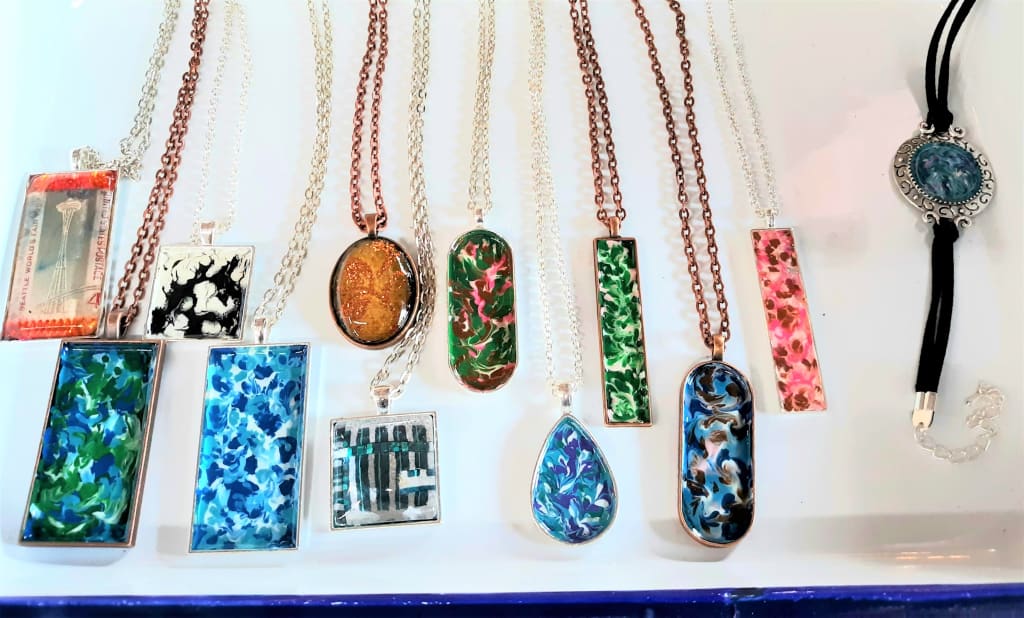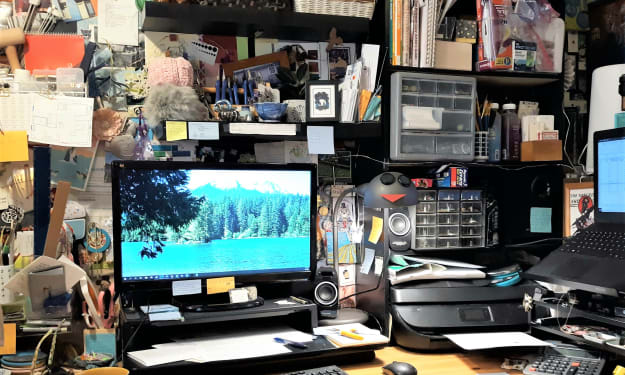Imposter Syndrome Helps My Work and Creativity
I went from fraud to maker during one popup market

“I really like your stuff,” she said, eying everything on my table.
“Thank you!” I answered brightly, with a smile. Please buy something, my inner voice pleaded.
She didn’t.
I knew it. I was a fraud. I should have kept my business online rather than open myself up to this. This mortification tinged with memories of a lifetime of small humiliations. These little lumps of failure gathering in my gut and throat, threatening to expand and meet in the middle. This wasn’t going to work.
Two weeks before, a friend who owns a microbrewery with her husband asked me if I wanted to vend at a mini popup market they were hosting. If she had phoned I would have found an excuse to decline. I say “found” as if excuses were laying around like pebbles on a beach and I easily could pick and choose. The truth is I would have latched on to the first big boulder of a lie that came to mind.
She texted, though, so I had time to come up with a more polished and believable lie. I would love to, but I have a thing to attend to support a friend in something important to her. The implausibility, the obviousness — it was like I wasn’t even trying. I hit pause on my search for a lie and reluctantly decided to search for the truth.
I was terrified. This might be the dreaded confirmation that my work as a crafter and maker was a waste of time. That it wasn’t working and I should give up the dream of financial and creative independence. A lie would help me stay in my comfortable but precarious box. The truth might set my illusions free, leaving me despondently behind.
I chose the truth.
Okay, yes, thank you! I’d love to. I texted back. Then the real work began.
The work of living with fear but still moving forward. The work of steadying my shaking hands as I packed jewelry and felt coasters and leather bookmarks into bins. The monumental effort of pushing thoughts of “fake” and “fraud” to some corner of my mind where they couldn’t trip me up. The last, final push to load the car, turn the key, and hit the road. No going back now.
Two other vendors were setting up as I arrived. They were friends by the time the event was over, but as I watched them tastefully and professionally display their wares the terror tears threatened to spill out of my eyes. These were real artisans. What did I think I was doing.
Malcom is a glass blower so talented that the Netflix show “Blown Away” asked him to appear. Marie has spent decades crafting pottery into beautifully organic shapes. They are craft market veterans. They are also incredibly nice, friendly, welcoming people whose warmth eased some of my tension as I set up my table.
“I’ll take these earrings. They’re so pretty! And a couple of those coaster sets. They’ll go perfectly with my new table!” I swiped her credit card, using my new mobile card reader for the very first time. I won’t say that every vestige of imposter syndrome fell away with my first customer, but my shoulders loosened a bit and I took my first deep breath of the day.
Maybe this would work out, after all.
During the week after the mini popup I debriefed myself. I didn’t have that many customers, but I made enough of a profit to justify the time, energy, and work I put into the event, and pay for the craft beer I drank to soothe my nerves. I highly recommend a good apricot sour on a hot summer afternoon.
It was almost enough to destroy the image of myself as a fake maker, but not quite, and I’m okay with that. I never had full-blown imposter syndrome to begin with, only being able to lay claim to about half of the characteristics, and I feel like a little bit of self-doubt keeps me sharp. As long as I temper my high expectations with a dash of honesty when it’s called for, I won’t beat myself up when I fall short. And I will fall short and I will fail. We all do. It’s life. It happens. That’s a hard lesson to learn.
I think that most creative people, no matter their pursuit, fall victim to aspects of imposter syndrome from time to time. It’s easy to believe we’re worthless and talentless when sales are slow or no one is reading our work. For some people it’s a real problem, and it causes real problems. I don’t want to minimize the disorder or imply that it’s easy to get over. I do want to offer hope through my experiences.
My crafting business was conducted entirely online through my Etsy shop prior to the popup. I now feel confident enough to do more of them. Maybe even sell at a big craft fair. This business has always been moderately successful, but never big enough to pay all the bills. And maybe it never will be, but I’m determined to worry less about that and worry more about turning down opportunities.
“If you want to say no, you should probably do it,” my daughter pointed out at the beginning of this mini saga. I raised a smart woman, I think. She’s right.
I would like my work — my crafting and my writing — to support my life. To pay the bills. To enable saving a little something for the future. But, I am now keeping in mind that my life supports my work, as well, and that working in creative spaces blends work and joy and passion into a new thing for me. Something that is all of me. A complete and whole thing that doesn’t leave nearly as much room for imposter syndrome as a compartmentalized life once did.
All it took was that one, first, in-real-life customer. She spent her money — that sometimes scarce, often hard-earned, and always precious thing in our capitalist society — on things that I created, while I was standing nervously right in front of her. It was validating in a way that no online sale could ever be. I was a part-time crafter before this. Now, I am a working maker.
About the Creator
Maria Shimizu Christensen
Writer living my dreams by day and dreaming up new ones by night
Also, History Major, Senior Accountant, Geek, Fan of cocktails and camping






Comments
There are no comments for this story
Be the first to respond and start the conversation.